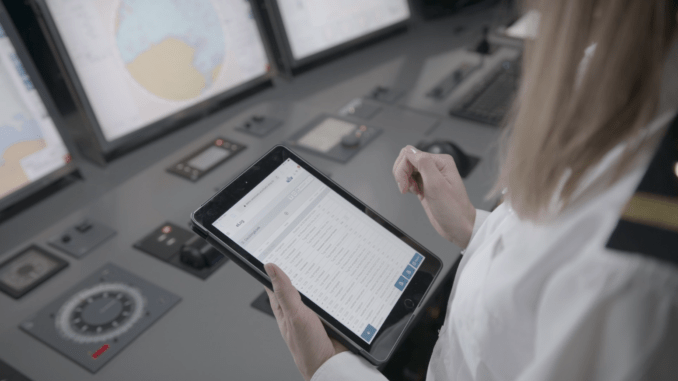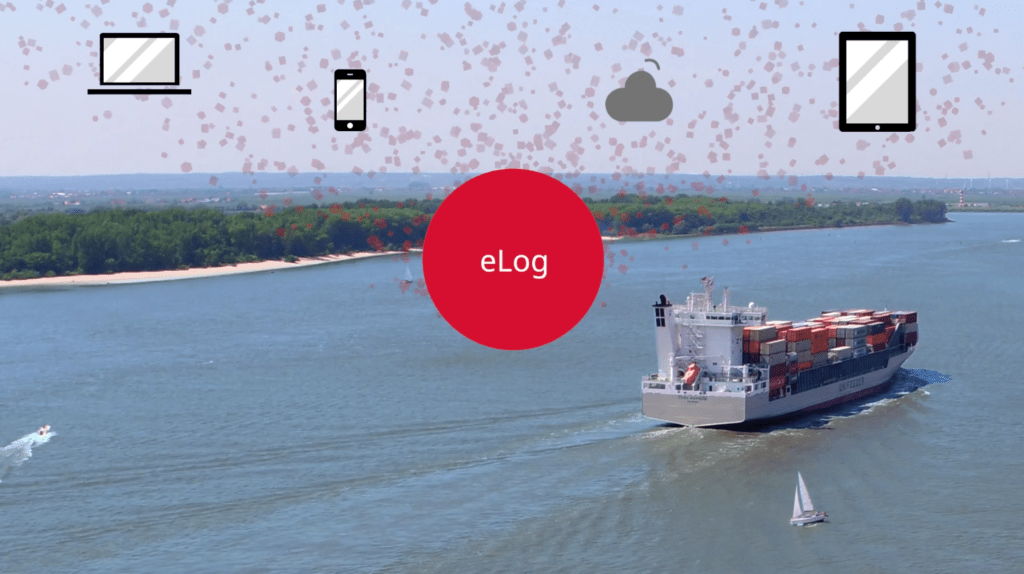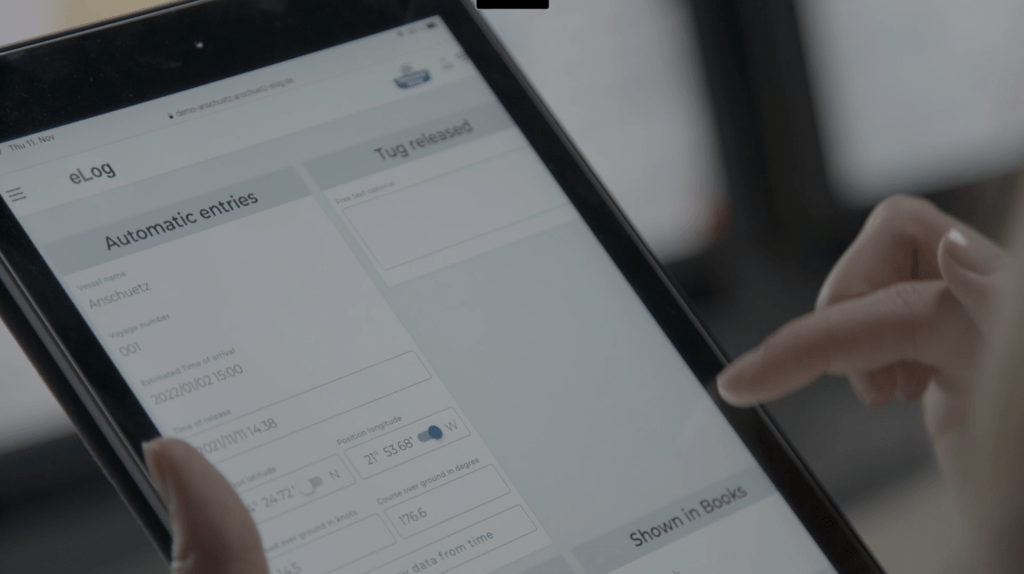
Electronic logbooks are much more than just a digital replacement for traditional paper logbooks – they are an important cornerstone for paperless shipping and the all-rounders when it comes to integrating a lot of data on board. This offers the potential to simplify many processes and provide valuable information for analysis programmes.
The Anschütz eLog ensures secure and complete logbooks and simplifies various documentation tasks. Beyond that, it offers a range of features and integrations that streamline the collection and use of onboard data.
Intelligent use of onboard data
It’s smart to make any onboard data digitally available and make use of it. Onboard data can be sensor data or input from the crew. Both are collected in a logbook and, by that, set into a context (position, situation, other data).
Anschütz’s eLog offers shipowners the ability to easily export this information in electronic formats or conveniently view and analyse the data from ashore via cloud access.
eLog simplifies reporting and, through the integration with other systems, provides valuable real-time voyage information to all stakeholders by consolidating and transforming many manual data processes into a digital data chain for exchange, processing and analysis.

Integrating sensor data
The added value of maritime data chains and performance analysis comes from the quantity and quality of the available data. Using an electronic logbook as a collection platform has its benefits:
- First: Electronic logbooks are tamper-proof and secure.
- Second: Pure sensor data is stored together with information about the situation as well as actions and decisions of the crew, giving a full picture.
Anschütz’s eLog comes with intuitive, workflow-supported templates for the manual recording of information. The eLog automatically adds data such as position, speed and course from navigation systems. Further data or even performance and health information from individual systems and sensors can be added, depending on the level of integration with the bridge systems.
Data from Hoppe Marine Systems can also be integrated. By that, tank levels, flow meter values and engine data, among other things, are available in the eLog. Beyond the ease of use for the user, the combination of the sensor data validation capabilities of Hoppe with eLog’s intelligent workflow and plausibility checks delivers significant benefits to customers in terms of data quality and efficiency.

eLog by Anschütz: largest scope of digital books, simple implementation
Anschütz launched eLog to replace error-prone manual data collection with an automated, secure, digital process chain. The eLog includes all relevant bridge and deck logbooks, engine logbooks, MARPOL record books and sensitive logbooks, including the ship security logbook, visitor logbook and medical log.
An intuitive user interface and templates that closely resemble the familiar paper logbooks support the implementation of electronic logbooks. To further simplify the transition to electronic logbooks, Anschütz has introduced a clear, structured, phased process. Computer-based training and shore-based support are also available. If necessary, support is provided for ISM Code adaptation.
eLog is bridge-system-agnostic and easily integrates with other manufacturers’ systems. Leading classification societies and many flag states recognise the eLog as a full equivalent to paper logbooks.






Be the first to comment